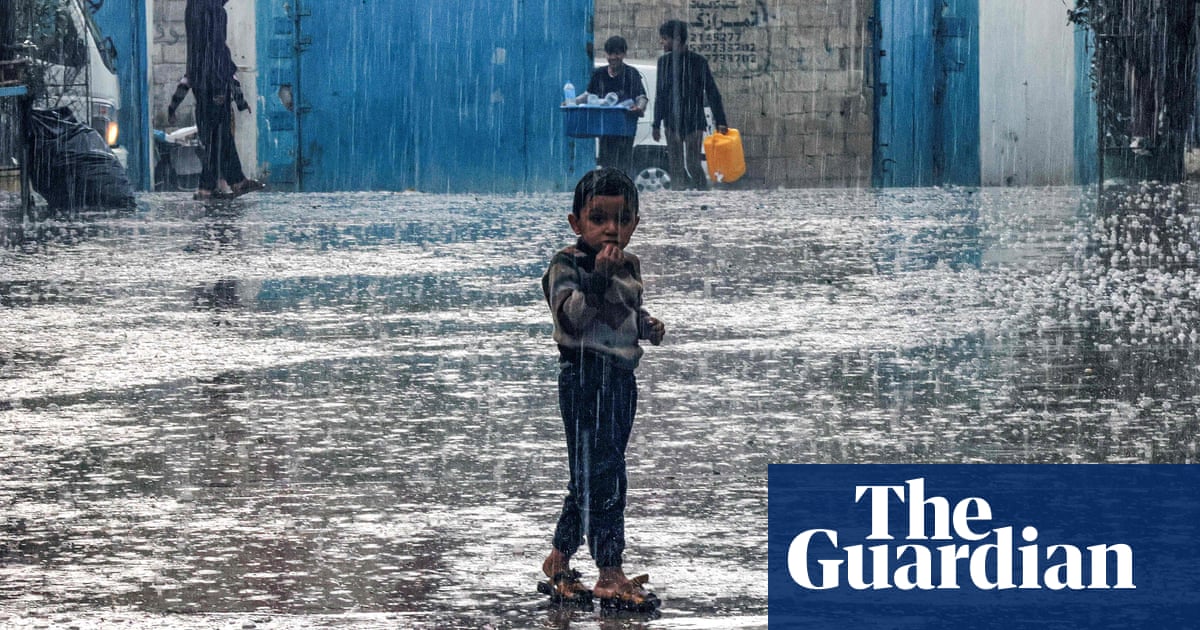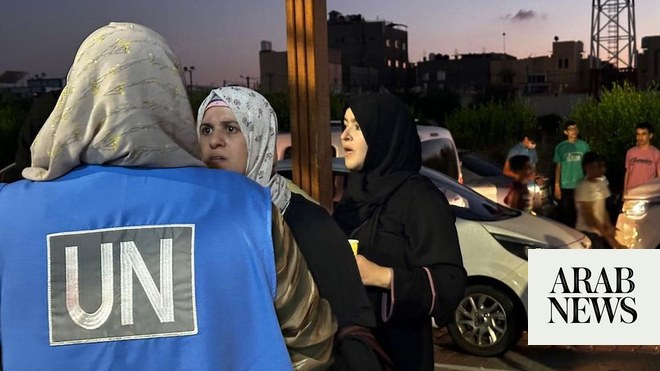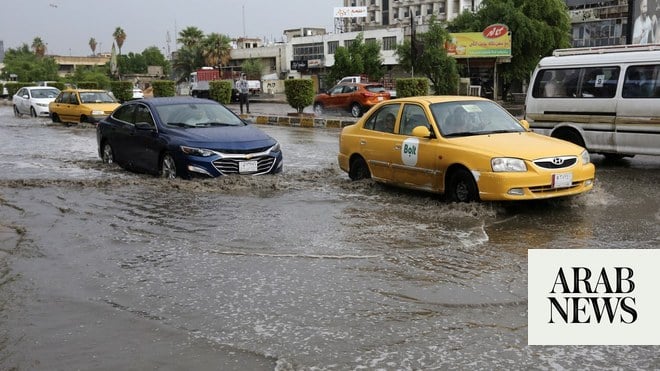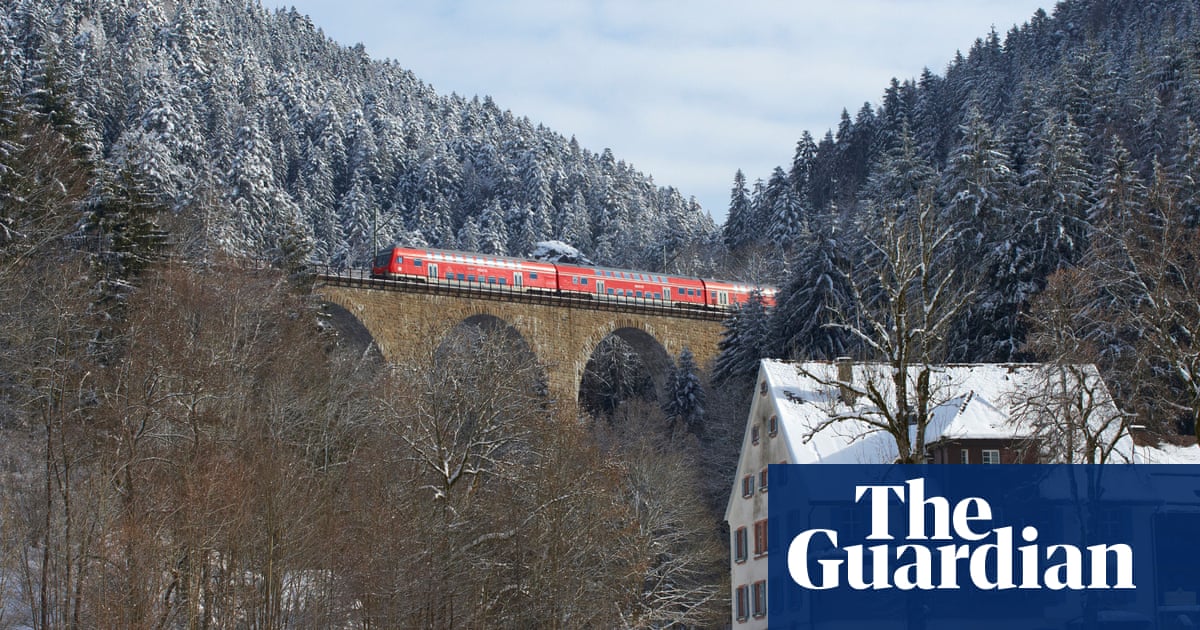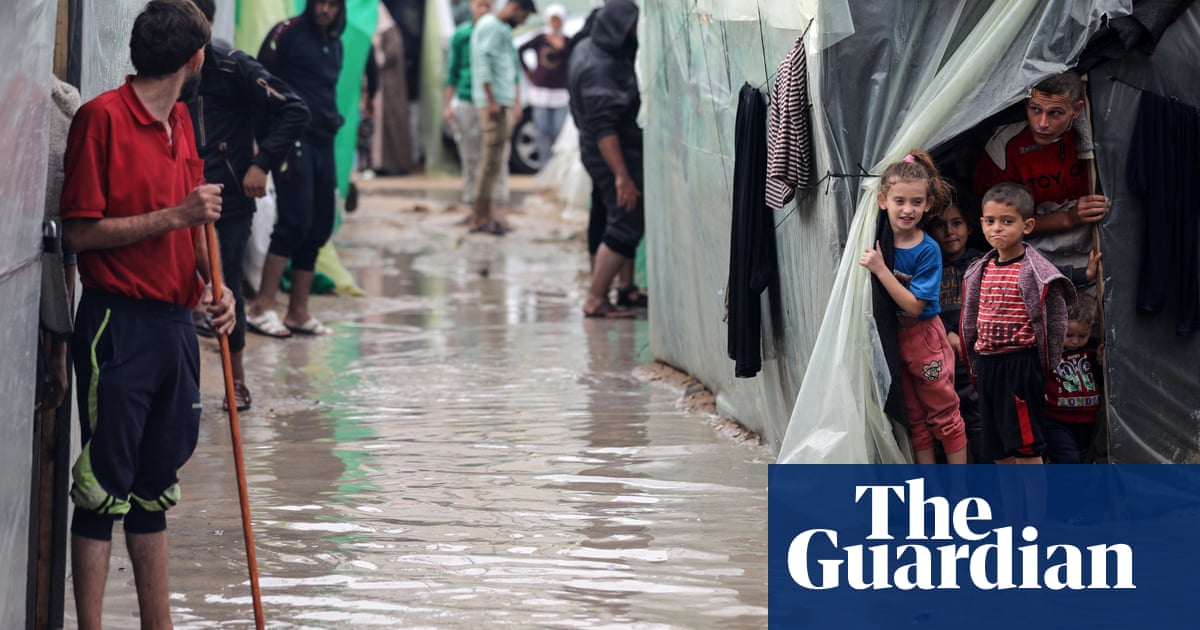
Heavy winter rains have lashed Gaza, washing out tents and flooding some areas, as the head of the UN’s agency for Palestinian refugees described deteriorating conditions in the coastal strip as a “living hell”.
Amid escalating shortages of food, spreading waves of communicable disease and the near collapse of Gaza’s health system, the winter storm turned large areas to mud and drenched many of those sleeping in makeshift plastic tents.
Separately, Israel announced it had lost nine soldiers including two senior commanders and several other officers in a Hamas ambush in the Gaza City neighbourhood of Shejaiya amid continued heavy fighting across Gaza.
The rapidly worsening humanitarian situation comes as Israel’s air and ground war – after the attack by Hamas on 7 October – has pushed nearly 85% of Gaza’s population from their homes.
Among those caught in the open was Ameen Edwan, camped with thousands of others in the grounds of al-Aqsa Martyrs hospital in central Gaza, who said his family had been unable to sleep.
“Rainwater seeped in. We couldn’t sleep. We tried to find nylon covers but couldn’t find any so we resorted to stones and sand” to keep the rain out, he told the AFP news agency.
At a tent camp in Rafah, located on sandy terrain strewn with rubbish, people were trying to recover from a horrible night, carrying buckets of sand to cover puddles inside or just outside their tents, and hanging up soggy clothes.
Some families have proper tents but others are making do with tarpaulins or thin, see-through plastic made to protect goods rather than to provide shelter for people. Many tents have no groundsheets, so people spent the night huddling on wet sand.
“[The tent] is torn and water poured on us. We were drenched,” said Ramadan Mohadad, a middle-aged man who was trying to fix his family’s shelter fashioned from strips of plywood and a thin plastic sheet.
Mohadad’s white T-shirt with stripes had large wet patches around the collar and on both shoulders. “We tried as much as we could to protect ourselves so water would not get through but rain got in … This plastic does not protect people sleeping under it,” he said.
Rips were visible in other families’ plastic shelters, and some showed puddles inside. One family had placed a cement block at the entrance to act as a sort of dam, as well as smaller bricks inside that looked like stepping stones.
Elsewhere, a short segment of video footage shared by an Al Jazeera journalist showed a teenage boy walking in knee-deep filthy water in Jabalia refugee camp as he carried a shrouded body, said to be one of his siblings.
Describing the situation in Gaza, Philippe Lazzarini, the head of the UN’s Palestinian refugee agency (UNRWA) told a meeting of the UN global refugee forum in Geneva that he had witnessed a “hell on earth”.
People in the Palestinian territory were “facing the darkest chapter of their history since 1948, and it has been a painful history”, he said after his third recent trip there.
“Most of Gaza’s population has been forcibly displaced, largely into the southern part of the strip. Rafah is now hosting well over a million people. It used to be home to 280,000 people,” Lazzarini said. “It lacks the infrastructure and resources to support such a population. Inside our own warehouses, families live in tiny spaces that are separated by blankets hung on thin wooden structures. Out in the open, flimsy shelters have emerged everywhere. Rafah has become a tented community.”
He described seeing people halting an aid truck and eating the food found inside in desperation as they stood in the street.
“The spaces around UNRWA buildings are congested with shelters and desperate, hungry people. Aid can no longer reach those who could not move to the south. There is no more food to buy, even for those who can pay. In the shops, the shelves are empty,” he said.
As the health ministry in Gaza said deaths in the two-month-long war had topped 18,000, including civilians and Hamas fighters, Israel announced that two senior commanders and seven other soldiers had been killed by Hamas in a complex ambush in the Gaza City suburb of Shejaiya.
Lt Col Tomer Grinberg, a commander in the Golani Brigade, who had fought against Hamas during its attack on the southern Israel border communities on 7 October, was killed during a failed attempt to rescue four injured soldiers.
In one of the most lethal incidents for Israeli soldiers to date in the two-month-old war in Gaza, Grinberg and several of his senior officers were killed in fighting involving improvised explosive devices while they were fired on from buildings.
Among the dead announced by the IDF on Wednesday were another colonel, three majors and several members of a combat rescue force. An IDF official said they were killed in a battle over a Hamas “combat complex” of three to four buildings joined by tunnels and packed with weapons, near Shejaiya market.
Special forces and armoured and engineering units mounted an attack on two of the buildings and some soldiers were injured and killed, according to the official’s account. Other units in the area went to help recover the wounded and dead, led by their commanders, fearing those left behind could be pulled into a tunnel by Hamas gunmen. Then the rescuers came under fire, and were hit by explosives in a battle that last several hours.
“It was a very complex event with shooting from many different directions with different weaponry,” the IDF official said, adding that Hamas fighters in Shejaiya were armed with explosive drones, rocket-propelled grenades, sniper rifles and booby trap bombs.
The ambush came despite daily claims by the IDF that it is close to having operational control of key Hamas strongholds in the north of Gaza. The IDF claims to have killed 350 Hamas fighters in Shejaiya alone.
Lt Col Grinberg had risen to public prominence after the 7 October attack, describing in an interview how he had rescued two infant twins whose parents had been killed by Hamas in Kfar Aza.
“It is a very heavy price that we paid in this battle,” an IDF official said. “Our commanders are out in the front, engaging and leading from the front.”








